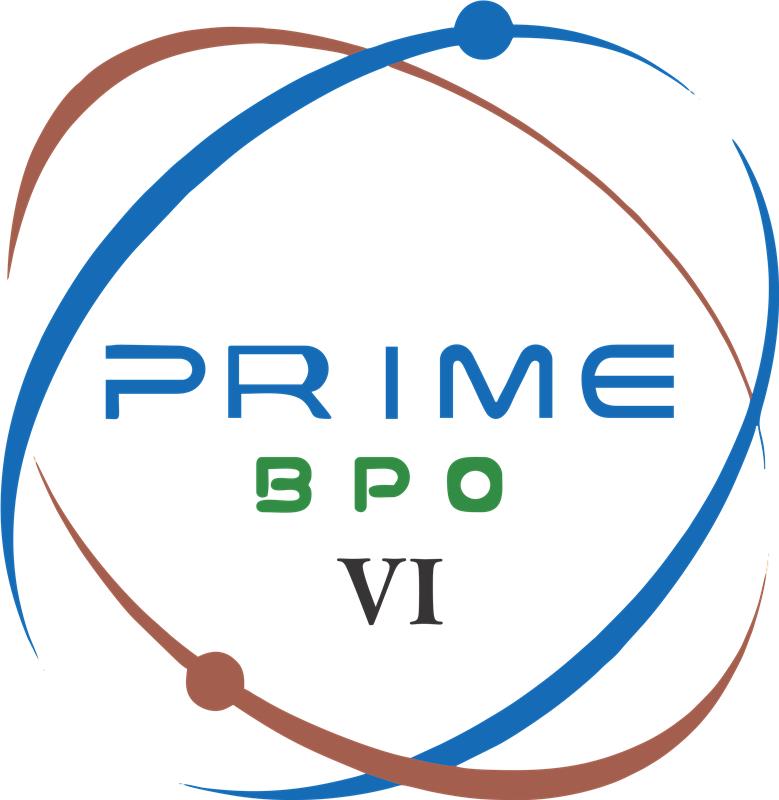Corporate Development vs Business Development are often mentioned together, but they play very different roles in a company's growth. Corporate development deals with big-picture strategies like mergers and acquisitions, aiming for long-term gains.
Business development, on the other hand, focuses on building relationships and expanding market reach, driving immediate revenue growth. Both are crucial, but how do they interact? Which one is more important for your company?
What is Corporate Development?
Corporate development refers to the strategic initiatives undertaken by a company to achieve growth and enhance value. This could include:
Mergers and Acquisitions (M&A): Buying or merging with other companies to expand reach or capabilities.
Divestitures: Selling off parts of the business that are not central to the core strategy.
Joint Ventures: Partnering with other firms to leverage shared resources for mutual benefits.
Strategy Planning: Developing long-term strategies to respond to market changes or opportunities.
The goal is to improve the company's standing and ensure long-term success through careful, strategic planning and execution.
Get Free Quotes
Customized Options Await
What is Business Development?
Business development involves tasks and processes aimed at developing and implementing growth opportunities within and between organizations. It encompasses:
Networking: Building and maintaining relationships with partners, customers, and other stakeholders.
Marketing Initiatives: Promoting the business through various channels to attract and retain customers.
Sales Strategies: Developing approaches to increase sales and expand the customer base.
Market Research: Analyzing market trends and customer needs to adjust strategies accordingly.
In essence, enterprise improvement is ready to locate the right fits for boom—whether or not through increasing client bases, finding new markets, or progressive partnerships. It's dynamic and without delay influences the bottom line.
Difference Between Corporate Development Business Development
Both Corporate Development vs Business Development are important for the boom and sustainability of an organization. However, their consciousness of distinctive components of enterprise increases, and operate with wonderful targets and techniques. Understanding those distinctions between Corporate Development vs Business Development can help streamline an organization's approach to growth and efficiency.
Objectives
Corporate Development:
Growth through Integration: Aims to expand and strengthen the organization by integrating other businesses through acquisitions or mergers. This often involves acquiring new technologies or expanding into new geographic regions.
Restructuring for Efficiency: Focuses on making the organization leaner and more efficient through divestitures and restructuring. This could involve selling off underperforming or non-core segments to focus resources on areas with more strategic value.
Business Development:
Revenue Growth: Directly targets activities that will lead to an increase in revenue, such as entering new markets or launching new products.
Relationship Management: Puts a strong emphasis on developing and nurturing long-term relationships with customers, partners, and other stakeholders to facilitate ongoing business opportunities.
Strategies
Corporate Development:
M&A Strategy: Plans and executes mergers and acquisitions, requiring rigorous analysis to identify potential targets that align with the company's strategic goals. This includes due diligence, valuation, and negotiation.
Strategic Partnerships: Look for opportunities to form alliances with other companies that could provide a strategic advantage, such as sharing resources or co-developing products.
Business Development:
Market Penetration: Uses market research to identify and exploit opportunities within new or existing markets. Strategies might include targeted advertising, promotional offers, or tailoring products to meet specific market needs.
Promotional Campaigns: Lead initiatives to increase product visibility and attract new customers. This might involve digital marketing, public relations campaigns, or participation in industry events.
Roles Within an Organization
Corporate Development:
Strategists and Analysts: These roles are pivotal in assessing and formulating strategies for growth or reorganization. They work on modeling, forecasting, and evaluating the financial implications of potential deals.
Legal and Financial Experts: Essential for navigating the legal intricacies of mergers and acquisitions, ensuring compliance with regulatory requirements, and managing the financial aspects of deals.
Business Development:
Sales and Marketing Teams: Tasked with implementing strategies and achieving tangible results in terms of increased customer engagement and sales. They are often on the front lines, interacting directly with clients and understanding their needs.
Network Builders: Focus on expanding the company’s reach and influence through strategic networking. This consists of attending enterprise meetings, undertaking community events, and leveraging online platforms to construct relationships.
Interaction and Collaboration
To maximize effectiveness, Corporate Development vs Business Development improvement groups have to function in tandem. Corporate development sets the stage with strategic planning and high-level negotiations, while business development follows through by applying these strategies in real-world scenarios. Regular communication and shared objectives between these departments ensure that the company not only grows in size but also enhances its market position and profitability.
Get Free Quotes
Customized Options Await
Difference table of Corporate Development vs Business Development
|
Parameter |
Business Development |
Corporate Development |
|
Working Methodology |
Focuses on building relationships and promotional eforts |
Focuses on internal changes for sustained business growth |
|
Goals |
New sales opportunities to boost revenue and sales conversions |
Critical internal decisions for long-term sustainability |
|
Approach |
Operational |
Strategic |
|
Time |
Short-term changes and gains |
Long-term strategic procedures |
|
Sales |
Directly improves sales |
May indirectly impact sales |
|
Customer base |
Drives customer engagement |
Indirectly involved in increasing customers |
|
Scale |
Works on a smaller scale with localized impact |
Deals with larger scale and transformative effects |
|
|
Collaborative Strategies Between Corporate Development vs Business Development
Corporate Development vs Business Development teams play distinct but interconnected roles within a company. Their collaboration is essential for leveraging the full spectrum of strategic opportunities. Here’s how they can effectively work together:
Shared Objectives
Both teams should have a clear understanding of the company’s overarching growth objectives. This alignment ensures that every initiative supports the broader business strategy. Frequent interactions between the teams can help align their tactics and strategies, ensuring that both short-term and long-term goals are met.
Communication and Information Sharing
Open lines of communication are vital. Regular updates and shared reports can prevent silos and ensure both teams are aware of each other's actions and strategies. Periodic briefings allow each team to understand the market insights and operational constraints faced by the other, fostering a holistic approach to business strategy.
Get Free Quotes
Customized Options Await
Leveraging Strengths
Corporate development can use insights from business development’s direct interactions with customers and markets to inform decisions on potential mergers, acquisitions, or partnerships. When corporate development secures a new acquisition or partnership, business development can smooth the path into new markets or segments, utilizing their skills in market penetration and relationship management.
Coordinated Efforts in M&A
Business development can provide valuable market intelligence and customer feedback that helps assess the viability and strategic fit of a potential acquisition. After an acquisition, business development plays a critical role in integrating the new entity within the company’s existing market strategies, ensuring a seamless transition and maintaining continuity with clients.
Joint Initiatives
Projects that involve the co-development of products or services can benefit from the strategic input of corporate development and the operational agility of business development. Managing major accounts may require coordinated efforts to negotiate terms that align with long-term strategic goals while also supporting day-to-day business operations and relationships.
Performance Metrics
Establish key performance indicators that reflect both the success of strategic initiatives and operational effectiveness. This helps in measuring the impact of collaborative efforts directly on business outcomes. Implement mechanisms for feedback from both teams to continually refine and optimize collaboration strategies.
By fostering a symbiotic courting, Corporate Development vs Business Development can force advanced enterprise outcomes, ensuring that the organization not handiest grows but also adapts to converting market situations and purchaser needs efficaciously.
Pros and Cons of Corporate Development vs Business Development
Business development and company development are vital additives of an enterprise's increase method, each gambling distinct roles with precise benefits and downsides. Here's a deeper look into their benefits and drawbacks:
Pros of Business Development
Direct Market Impact: Business development directly drives sales and market presence, delivering tangible results such as increased revenue and customer base expansion.
Flexibility: This area is characterized by its agility, allowing teams to quickly respond to changing market conditions or customer demands with tailored strategies.
Relationship Building: Effective business development relies on building strong, enduring relationships with a wide range of stakeholders, including customers, which fosters loyalty and recurring business.
Cons of Business Development:
Short-term Focus: Often, the pressure to meet immediate sales targets can overshadow the need for long-term strategic planning, which might limit sustainable growth.
Resource Intensity: Maintaining and expanding market presence requires significant ongoing efforts and resources in marketing, sales, and customer service.
Market Dependence: This area's success is closely tied to market conditions, making it particularly sensitive to economic downturns or changes in consumer behavior.
Pros of Corporate Development
Strategic Growth: Focuses on high-effect techniques which includes mergers and acquisitions, which could substantially adjust the enterprise's market role and scale.
Long-time period Orientation: Corporate improvement is pushed by way of the employer’s long-term strategic dreams, making sure selections are made with a destiny-oriented angle.
Synergy Creation: It seeks to create synergies through integration and alignment of latest belongings or partnerships, often main to enhanced performance and capabilities inside the organisation.
Cons of Corporate Development:
Complexity and Risk: Engaging in mergers, acquisitions, or large-scale strategic shifts involves complicated negotiations and good sized danger, with excessive stakes concerned in each choice.
Slow Implementation: The nature of huge transactions way they are able to take a long time to plot, negotiate, and put in force, potentially delaying predicted benefits.
Resource Heavy: Significant assets are required now not only for the preliminary transactions however also for the subsequent integration and optimization methods.
Balancing Both for Optimal Growth
Leverage Strengths: Companies should leverage the quick, responsive nature of business development to support the strategic shifts and integration efforts led by corporate development.
Shared Goals: Both departments must align under a shared vision of the company’s objectives, ensuring that immediate actions and long-term plans are cohesive.
Communication: Strong, continuous communication between both teams ensures that insights from market-facing activities inform strategic decisions and that all stakeholders are aligned on objectives and expectations.
Balancing the dynamic abilities of enterprise improvement with the strategic scope of company improvement allows organizations to navigate each on-the-spot demanding situation and future possibilities efficiently. This synergy not only drives modern-day performance but also positions the employer for sustainable fulfillment.
Conclusion
Corporate Development vs Business Development are both vital to a company’s success. Corporate development focuses on big-picture strategies like mergers and acquisitions. Business development, on the other hand, drives everyday growth through market engagement and customer relationships. When these two areas work together, they create a powerful force that can drive significant growth. So, in your company, which one do you find more crucial? Are they working together to push your business to new heights?
References:
https://dealroom.net/blog/corporate-vs-business-development
https://www.investopedia.com/articles/personal-finance/090815/basics-business-development.asp
https://winhubllc.com/business-development-vs-corporate-development/






